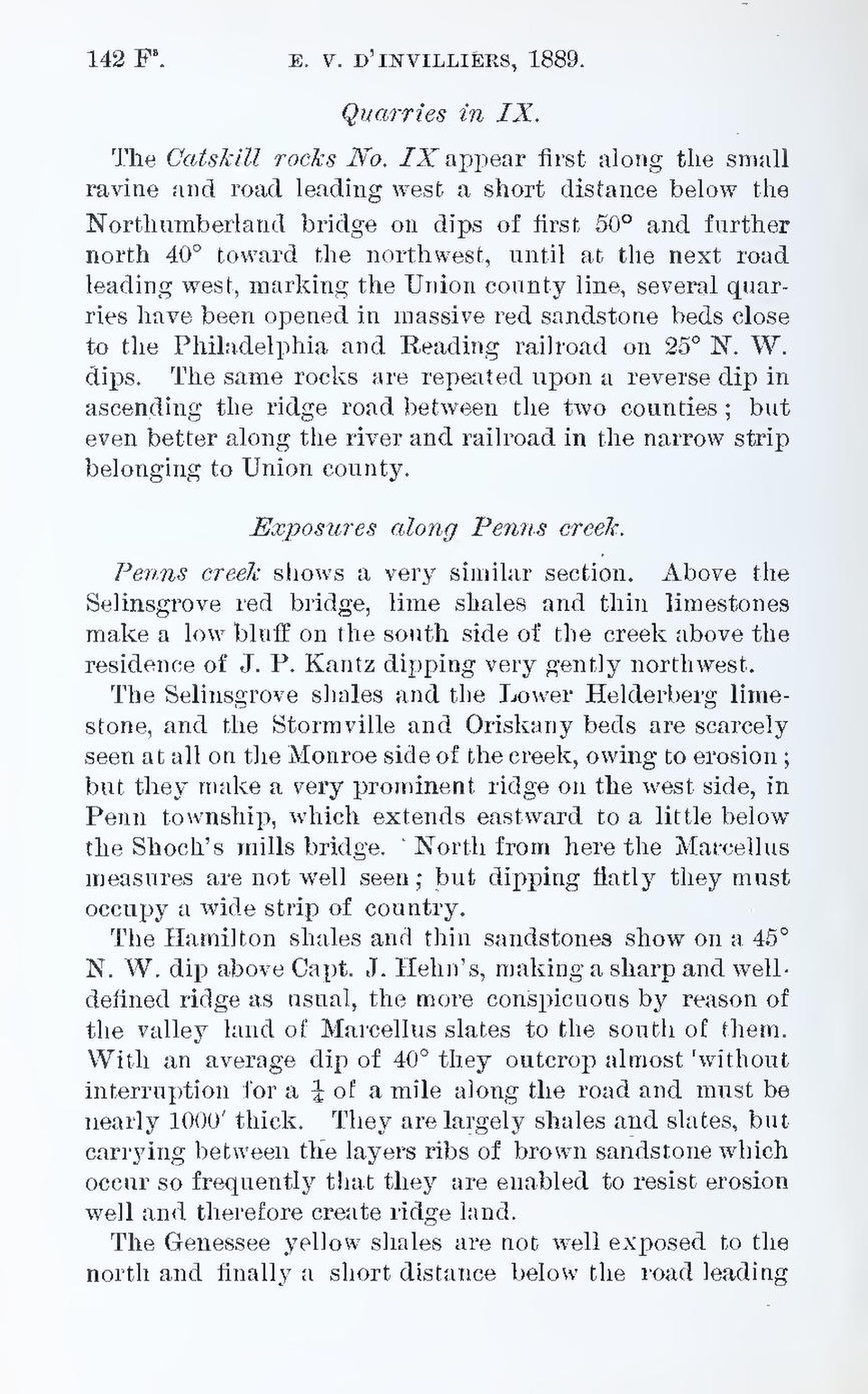Quarries in IX.
The Catskill rocks No. IX appear first along the small ravine and road leading west a short distance below the Northumberland bridge on dips of first 50° and further north 40° toward the northwest, until at the next road leading west, marking the Union county line, several quarries have been opened in massive red sandstone beds close to the Philadelphia and Reading railroad on 25° N. W. dips. The same rocks are repeated upon a reverse dip in ascending the ridge road between the two counties; but even better along the river and railroad in the narrow strip belonging to Union county.
Exposures along Penns creek.
Penns creek shows a very similar section. Above the Selinsgrove red bridge, lime shales and thin limestones make a low bluff on the south side of the creek above the residence of J. P. Kantz dipping very gently northwest.
The Selinsgrove shales and the Lower Helderberg limestone, and the Stormville and Oriskany beds are scarcely seen at all on the Monroe side of the creek, owing to erosion; but they make a very prominent ridge on the west side, in Penn township, which extends eastward to a little below the Shoch’s mills bridge. North from here the Marcellus measures are not well seen; but dipping flatly they must occupy a wide strip of country.
The Hamilton shales and thin sandstones show on a 45° N. W. dip above Capt. J. Hehn’s, making a sharp and well-defined ridge as usual, the more conspicuous by reason of the valley land of Marcellus slates to the south of them. With an average dip of 40° they outcrop almost ‘without interruption for a ¼ of a mile along the road and must be nearly 1000′ thick. They are largely shales and slates, but carrying between the layers ribs of brown sandstone which occur so frequently that they are enabled to resist erosion well and therefore create ridge land.
The Genessee yellow shales are not well exposed to the north and finally a short distance below the road leading
